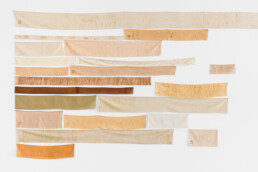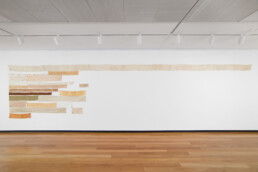A CURE FOR PLANT BLINDNESS, 2017 Open House3rd Tamworth Textile TriennaleCurator: Glenn BarkleyTamworth Regional Gallery14 October - 10 December 2017Touring 2018—2020
Plant Blindness —a term coined by James Wandersee and Elisabeth Schussler—is the literal ignorance of plants by human beings and their spontaneous preference for animal life. They argue this consists of failure to see, notice or give attention to the plants in one’s life, belief that plants are mere backdrops for animal life, overlooking the importance of plants to human life and misunderstanding of the differing time scales of plant and animal activity.¹
When visiting Tamworth, I was struck by its beautiful street trees. Consequently, I invited Tamworth residents to identify a tree they held dear, or considered significant. I asked them to take a frottage (rubbing) around the girth of this tree; to record the species, location, date and time taken to make the frottage and to write why this tree was important or special.
The act of taking a rubbing from a significant tree meant each participant spent time with a tree. The contact between human and plant is recorded with crayon on paper. Rough or smooth, patterned or chaotic, the tree markings are a collaboration between person and plant. The rubbings were made in the Tamworth region, and then posted to me in Melbourne.
Using screenprinting and natural dyeing techniques, I reproduced a 1:1 scale textile of each frottage. Each Tamworth specimen is dyed with the bark or leaves of a relative growing far away. Specimens of the species were found in Melbourne, Canberra, Maslin Beach and Goolwa (South Australia). Taking a rubbing in one location, and reproducing the rubbing with dye of the same species growing elsewhere, enacted connections between sites, people and plants. It recorded personal connections to specific trees, and how we connect with, and need, the more-than-human world. The book and accompanying dyed and printed cloth provide a record of these relations. The participants in this project have collaborated with me and the trees, revealing that not all humans suffer Plant Blindness.
¹ Hall, Matthew. Plants as Persons: A Philosophical Botany. Religion and the Environment. Albany, New York: SUNY, 2011, p.5.
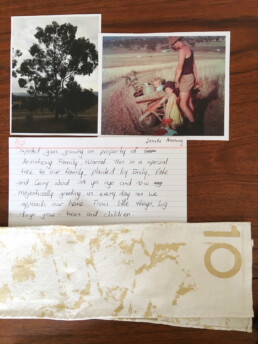
A Cure for Plant Blindness
2017
Work in progress
Screenprint, natural dyes, silk, linen, hemp, cotton
Variable dimensions
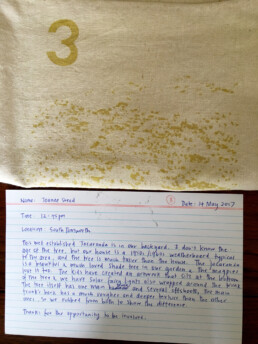
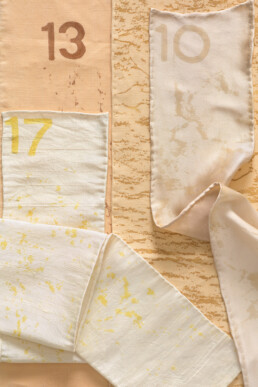
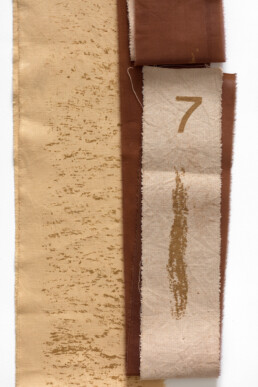
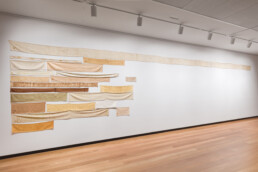
A Cure for Plant Blindness
2017
variable dimensions, overall 300 x 600 cm
mordant screenprint, linen, silk, cotton, hemp, natural dyes
Town Hall Gallery, Melbourne
Open House, 3rd Tamworth Textile Triennial
1 February – 15 March 2020
